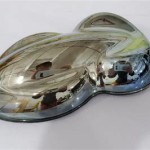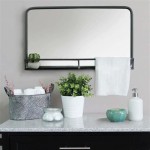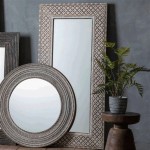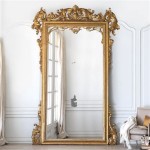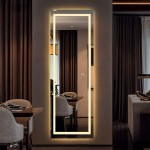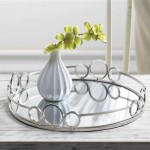Antique Beveled Glass Mirrors
Antique beveled glass mirrors represent a fascinating intersection of functionality and artistry. More than mere reflective surfaces, these objects offer glimpses into past eras, showcasing the evolving techniques of glassmaking and the changing aesthetic sensibilities of bygone times. Understanding their defining characteristics allows for a deeper appreciation of their historical significance and enduring appeal.
The defining feature of a beveled glass mirror is the angled edge surrounding the central mirrored surface. This bevel, created by grinding and polishing the glass, creates a prismatic effect, refracting light and adding a decorative border. The width of the bevel can vary, with wider bevels generally indicating older mirrors. This process, while now achievable through automated techniques, was historically performed by skilled artisans, adding to the value and allure of antique examples.
The history of beveled glass mirrors can be traced back to the Roman Empire, though the techniques were refined and popularized during the Venetian Renaissance in the 16th century. Venetian glassmakers, renowned for their artistry, developed sophisticated methods for creating elaborate bevels, transforming mirrors into highly prized luxury items. The secrets of Venetian glassmaking were closely guarded, contributing to the exclusivity and high cost of these mirrors.
During the 18th and 19th centuries, the production of beveled glass mirrors spread throughout Europe and eventually to America. The rise of the Industrial Revolution led to innovations in glass manufacturing, making beveled mirrors more accessible to a wider audience. However, the quality and craftsmanship of these later examples often differed from their earlier Venetian counterparts.
Several key factors contribute to the value and collectibility of antique beveled glass mirrors. The age of the mirror is a primary consideration. Mirrors from the 18th and early 19th centuries, particularly those of Venetian origin, are generally the most sought after. The size and shape of the mirror also play a role. Large, elaborately shaped mirrors tend to command higher prices than smaller, simpler ones.
The condition of the mirror is another crucial factor. Antique mirrors often show signs of age, such as minor scratches, silvering loss, or imperfections in the glass. While some minor imperfections can be considered acceptable and even contribute to the mirror's antique charm, significant damage can detract from its value. Restoration efforts, while sometimes necessary, can also impact the value, particularly if not done professionally.
The presence of original framing can significantly enhance the value of an antique beveled glass mirror. Frames from different periods often exhibit distinct stylistic features, providing valuable clues about the mirror's age and origin. Common frame materials include wood, gesso, and various metals. Elaborate carvings, gilding, and other decorative elements can further increase the value of the frame and the mirror as a whole.
Identifying authentic antique beveled glass mirrors requires careful examination. Examining the glass itself can offer clues. Antique glass often has subtle imperfections, bubbles, or waves that are absent in modern glass. The back of the mirror can also provide information. Older mirrors often have a darker, more reflective backing than newer ones. Consulting with a qualified antiques appraiser can provide expert authentication and valuation.
Caring for antique beveled glass mirrors requires specific considerations. Avoid using harsh chemicals or abrasive cleaners, as these can damage the delicate silvering. A soft, damp cloth is generally sufficient for cleaning the glass surface. When handling the mirror, avoid touching the beveled edge, as this can chip or damage the glass. Storing the mirror in a stable, climate-controlled environment helps prevent damage from humidity and temperature fluctuations.
Antique beveled glass mirrors offer more than just a reflection; they provide a reflection of history, craftsmanship, and artistic expression. From the opulent palaces of Venice to the grand homes of the Victorian era, these mirrors have served as both functional objects and decorative focal points. Their enduring appeal lies in their unique ability to blend historical significance with timeless elegance.
The market for antique beveled glass mirrors remains robust, with collectors and enthusiasts continuing to seek out these unique pieces. Understanding the factors that contribute to their value and practicing proper care ensures the preservation of these historical artifacts for generations to come.

Antique Beveled Glass Faux Tortoise S Mirror Wall Vintage Framed

Antique French Louis Xvi Gold Leaf Beveled Mirror 1890 For At Pamono

Copper Ornate Mirror With Beveled Glass Antique Dutch Scene Wall Decorative Hand Carved Made In Holland

Beautiful Octagonal Napoleon 3 Mirror With Beveled Glass Wood Broe And Golden Brass Inlays Overmantels Mirrors

Marley Forrest Medium Rectangle Antique Gold Beveled Glass Classic Mirror 24 In H X 36 W 53080 The Home Depot

3x12 Beveled Antique Mirror Glass Subway Tile With Free On Qualifying Orders

Hand Carved Copper Mirror With Beveled Glass Antique Dutch Scene Wall Old Ornate Brass Hanging

Antique Beveled Glass Mirror With Cast Brass Filigree Frame Circa 1910s Chairish

Marley Forrest Medium Rectangle Antique Gold Antiqued Beveled Glass Gothic Mirror 23 In H X 19 W 56007 The Home Depot

Proantic Rectangular Mirror In Golden Wood Early Twentieth
